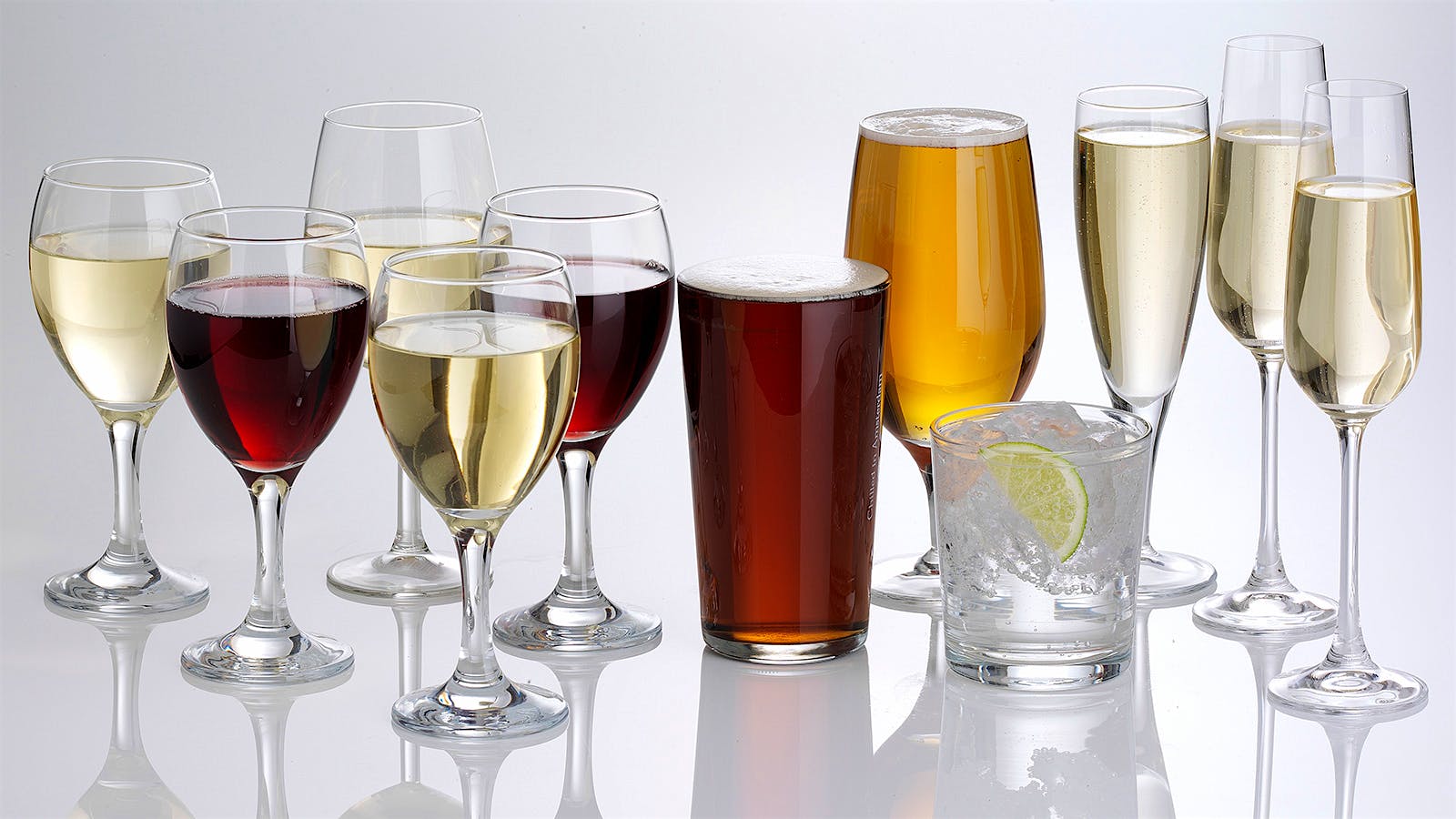When it comes to alcohol and health, does it matter what you drink? A new study has found a link between moderate red wine consumption and decreased levels of visceral fat, the tricky-to-lose “bad fat” that builds up with age and increases risk of heart disease and stroke. The study also found that while white wine consumption had no impact on bad fat, it did increase bone mineral density, a key marker of health in older adults. People who drank beer or spirits had increased levels of visceral fat.
The study, published in February in the journal Obesity Science and Practice, was led by Brittany Larsen, a Ph.D. candidate in neuroscience at Iowa State University, and overseen by Dr. Auriel Willette. The team analyzed lifestyle and body composition data from 1,869 participants in the U.K. Biobank Study, a biomedical database built by collecting detailed health information from over 500,000 U.K. residents.
While many studies about the health effects of drinking focus on the quantity of alcohol consumed, but not the type, this study analyzed the distinct impacts of four different beverage classes: beer and cider, white and sparkling wine, red wine and spirits. “To best assess how alcohol may influence body composition, one must consider the patterns of usage for different types of alcohol rather than simply gauging alcohol consumption as a whole,” the authors wrote.
There are two competing hypotheses about how alcohol affects body composition, they continue. In some studies, alcohol has been shown “to promote fat retention by reducing lipid oxidation.” In other words, not only is alcohol a source of extra calories (the so-called “empty calorie” hypothesis), but it actually slows the rate at which the body burns fat. Another hypothesis is that alcohol can “hinder caloric absorption and increase energy expenditure when consumed concomitantly with meals, which may, in turn, encourage weight loss.”
The Iowa State scientists argue that focusing on the type of alcohol consumed could clarify alcohol’s apparently contradictory risks and benefits. Their research indicates that while spirits and beer may well be empty calories, wine is anything but, and even “appears to help curb appetite,” Larsen told Wine Spectator. As the study succinctly puts it, “greater beer and spirit consumptions have been correlated with higher waist-to-hip ratio. Conversely, wine has largely shown null or inverse associations with waist-to-hip ratio.”
Larsen and Willette say wine’s polyphenols are likely responsible for its health benefits. Resveratrol, a well-known polyphenol found in red wine, “may reduce inflammation and discourage fat storage.” They attribute white wine’s bone-building effect to protocatechuic acid, a lesser-known polyphenol which “aids in the reduction of bone loss.” White wine contains nearly twice as much protocatechuic acid as red wine, which could explain why red wine did not show similar bone-strengthening activity.
Likewise, red wine contains much more resveratrol than white wine, which may be why white wine had no effect on visceral fat. Polyphenols hold rich possibilities for future study, Larsen said. “It is absolutely possible that there are polyphenols that have yet to be discovered that could have instead been responsible for explaining this association between white wine consumption and greater bone mineral density.”
The authors are transparent about the study’s limitations. The subjects were all white residents of the U.K. between 40 and 80 years old. It’s unclear how the study’s findings apply to other demographics—though Larsen believes that “the results would [likely] be similarly applicable to older individuals of other races.” Alcohol consumption and lifestyle data were self-reported, and while the study controlled for factors such as sex, diet, exercise and tobacco use, other factors besides alcohol consumption could have contributed to the observed health outcomes.
What should wine drinkers and healthcare professionals take away from the study? When it comes to health, “not all alcohol is created equally,” said Larsen. It’s good to be specific when talking to patients and evaluating one’s own drinking habits. “Older adults frequently hear that drinking alcohol is beneficial for their hearts,” Larsen said, but “wine may actually be the [only] alcoholic beverage to potentially offer benefits.”
Instead of basing guidelines on a standard number of drinks per week, it could help to break down alcohol consumption by type. In particular, moderate consumption of both red and white wine, with limited intake of beer and spirits, may offer maximum potential health upsides while minimizing risks.
“Consuming a mix of both types of wines in moderation [is] more likely to offer a greater range of benefits than drinking one type of wine consistently, as each type of wine does appear to offer unique health benefits to body composition in older adults,” said Larsen. The authors caution, however, that current non-drinkers should not start drinking alcohol solely for the potential health benefits.
Want to learn more about how wine can be part of a healthy lifestyle? Sign up for Wine Spectator‘s free Wine & Healthy Living e-mail newsletter and get the latest health news, feel-good recipes, wellness tips and more delivered straight to your inbox every other week!
